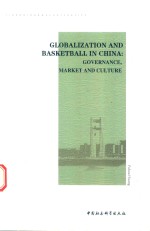
- 作 者:黄福华著
- 出 版 社:北京:中国社会科学出版社
- 出版年份:2017
- ISBN:9787520309240
- 标注页数:285 页
- PDF页数:299 页
请阅读订购服务说明与试读!
订购服务说明
1、本站所有的书默认都是PDF格式,该格式图书只能阅读和打印,不能再次编辑。
2、除分上下册或者多册的情况下,一般PDF页数一定要大于标注页数才建议下单购买。【本资源299 ≥285页】
图书下载及付费说明
1、所有的电子图书为PDF格式,支持电脑、手机、平板等各类电子设备阅读;可以任意拷贝文件到不同的阅读设备里进行阅读。
2、电子图书在提交订单后一般半小时内处理完成,最晚48小时内处理完成。(非工作日购买会延迟)
3、所有的电子图书都是原书直接扫描方式制作而成。
Chapter 1.Introduction 1
1.1 Globalization and Sport in China 1
1.2 Research Aim and Objectives 13
1.3 Thesis Structure 15
Chapter 2.Theorizing the GlobalLocal Nexus 19
2.1 Introduction 19
2.2 Definition of Globalization 20
2.3 Globalization and Sport 25
2.4 Grobalization/Glocalization Theory and Sport Studies 34
2.5 Theoretical Framework and Research Questions 40
2.6 Conclusion 42
Chapter 3.Methodology 44
3.1 Introduction 44
3.2 Ontology and Epistemology 45
3.3 Methodological Considerations 49
3.4 Research Methods 53
3.5 Reliability,Validity,and Ethical Considerations 63
3.6 Research Design 66
3.7 Conclusion 68
Chapter 4.Historical Overview 71
4.1 Introduction 71
4.2 Development of the NBA 72
4.3 Sport Development in the PRC 83
4.4 Conclusion 99
Chapter 5.Globalization and the Governance of Chinese Basketball 102
5.1 Introduction 102
5.2 The Grobalization of the NBA and the Internationalization of Basketball 103
5.3 Glocalization and the Professionalization of Chinese Basketball 112
5.4 Conflicting Globalization:A Professional Sports League with Socialist Characteristics? 118
5.5 Conclusion 147
Chapter 6.Globalization and the Chinese Basketball Market 149
6.1 Introduction 149
6.2 Grobalization and the NBA's Chinese Marketplace 150
6.3 Glocalization and the Emergence of an Indigenous Basketball Market 167
6.4 McDonald's or Shanghai Food? 179
6.5 Conclusion 189
Chapter 7.Globalization and Chinese Basketball Culture 191
7.1 Introduction 191
7.2 Grobalization and the NBA's De/reconstruction of Chinese Basketball Culture 192
7.3 A Resistant Voice from Above:The Nation's Culturalization of Chinese Basketball 215
7.4 A Resistant Voice from Below:the Grassroots' Ethos and the Glocalization of Chinese Basketball Culture 225
7.5 Conclusion 238
Chapter 8.Conclusion 239
8.1 Research Findings 239
8.2 Contribution to Theory 248
8.3 Research Limitations and Recommendations 249
Appendices 251
Interview Schedule A 251
Interview Schedule B 252
Interview Schedule C 253
Bibliography 255
Acknowledgement 285
